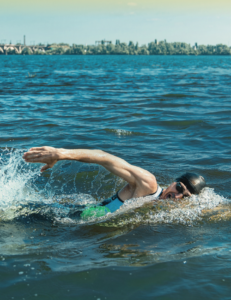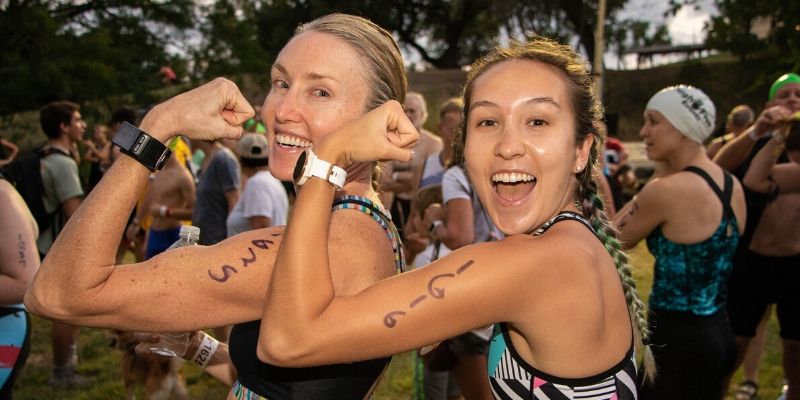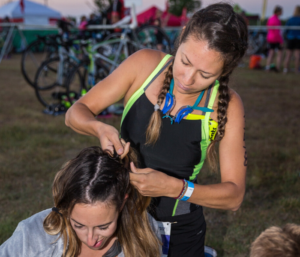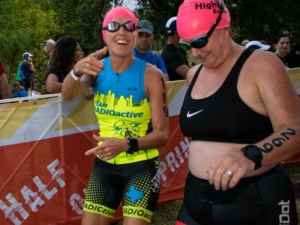Sighting Tips for Open Water Swimming
Swimming in the correct direction during open water can be a challenge for most athletes. This is why learning the proper technique for sighting in open water is crucial during training. Here are a few tips for sighting that can help when you line up for your next event.
Plan Ahead
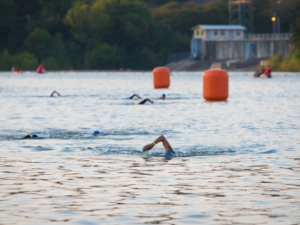
Print out the swim course map and go to the swim start to look for landmarks to use while sighting. Ideally, you want to survey the area at the same time when the swim will occur. This will give you an idea of where the sun is hitting the swim course and if the glare will be an issue.
Look for landmarks in the distance that are distinctive and easy to spot. Things like buildings, peaks of trees, or dips in the tree lines are great for spotting. Buoys can be hard to spot during the swim, and especially if you are slightly turned in the wrong direction, the significant landmarks provide an excellent alternative for sighting.
Come Up With a Game Plan
If the swim course runs parallel to the shores, use the shores to gauge if you are swimming in the correct direction. Look back towards the shore when you are taking a breath on your side while you are swimming. Also, use other swimmers to help you gauge if you are swimming in the correct direction. If you were swimming with a pack and suddenly found yourself swimming alone, popup and sight for landmarks or buoys to check if you are swimming in the right direction.
Prep Your Gear
Keep your goggles clean and apply your favorite anti-fog spray inside the goggles before the event. A good, clean pair of tri goggles will allow you to see better and further down the swim course to spot the swim buoys and landmarks.
Practice, Practice, Practice!
Here are some tips from seasoned triathlete and High Five Events‘ Operations Manager, John Chung. “Practice swimming with your head up in the pool. Use the cool down set for practice, and establish a rhythm for when to take a stroke for sighting. I like to swim two normal stokes and a sight stroke, pull, pull, sight. To get your head elevated slightly above water, push down instead of pulling through during the catch.
On your next open water swim practice, figure out which way you naturally curve to when you swim. For example, I tend to swim to my right, so if the buoys are on my left on a counter-clockwise swim course, I tend to swim away from the course. So for me, I need to look for buoys to my left when I sight during the swim. Sight 2 to 3 times to correct the direction in which you are swimming. First, locate the buoy or landmark you’ll use. Second, adjust your swimming direction to get back on course. Third, continue to sight as often as needed to make sure you are swimming towards the buoy or landmark.”
Make it a point to practice sighting during the cool-down portion of your swim sessions to have this skill mastered for your next event! Happy swimming!

